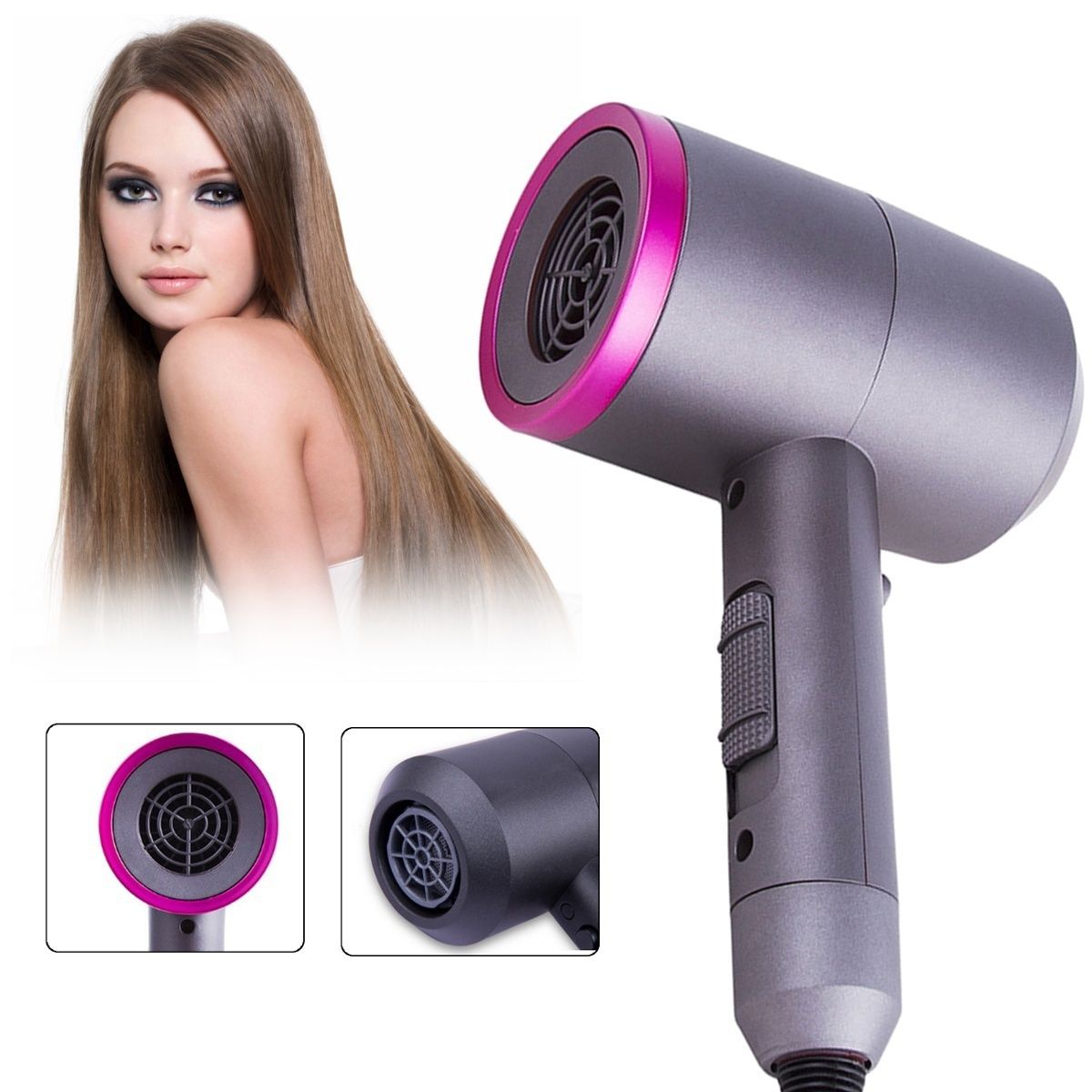Hair dryers – or blow dryers as they’re sometimes called – speed up the evaporation of water from wet hair. But how do they do it?
The circuit first sends current to a heating element. Typically, this is a coiled nichrome wire. When hot, it warms the air that’s blown from the end of the barrel.
Airflow
The hair dryer generates its strong air flow with a small electric motor that spins a fan. That fan draws in air from the hairdryer‘s air inlets and passes it over and through a heating element. That element heats the air through forced convection. The hot air then streams out the hairdryer’s outlet.
To vary the rate of airflow, a hairdryer typically has high and low airflow settings. The hairdryer’s small motor and fan spin more slowly when the current is low, generating less airflow.
A variety of attachments are available to enhance the hairdryer’s airflow. Concentrators narrow the hairdryer’s airflow for straightening and sleek blowouts, while diffusers soften the hair’s directional flow to avoid frizz or add volume to curls.
Heat
Hair dryers produce a great deal of heat. The hot air emitted by them speeds up the evaporation of water molecules in your hair, which helps to remove moisture from your hair.
Most hairdryers are designed to prevent overheating by limiting how much heat they can deliver. They often come with a front grill made out of material that can withstand the high temperatures produced by the heater element. This is to prevent small children or other especially inquisitive people from sticking their fingers down the barrel of the hairdryer where they could be burned.
Most stylists suggest that hairdryers be used at moderate heat levels which are less likely to damage the hair. Using a hairdryer on high heat settings can bake your hair and scalp and make it more susceptible to split ends, dryness and frizziness.
Temperature
Hair dryers generate heat by passing an electric current through a metal heating element called a nichrome wire. This wire is typically shaped like a coiled spring and can be up to 12 in (30 cm) long. A ceramic coating or crushed tourmaline is often added to the nichrome wire, which helps it produce and retain more heat more efficiently.
When the nichrome wire heats up, it causes water molecules in the air to evaporate and move more quickly. The speed at which this happens depends on the temperature of the air and how wet it is.
The safety cut-off switch on most hair dryers ensures that the nichrome wire never heats up to a point where it can burn your scalp. Ideally, you should avoid using the high heat setting on your hair as it can cause serious damage. However, a medium temperature works well for fine to medium hair because it can help prevent over-drying and burning your strands.
Safety
A hair dryer must work safely in the widest variety of conditions. Manufacturers try to predict how their appliances will be misused, and include safety features to prevent dangerous mishaps like overheating and fires. Look for a thermal cut-off that shuts off the heating element if temperatures become too high.
Lint filters in hair dryers remove clumps of lint that can block airflow and make the appliance overheat. Some models also have a removable lint screen that is easier to clean.
For added protection, most modern hair dryers have a ground fault circuit interrupter (GFCI) that shuts off power to the appliance if it is accidentally immersed in water. Some also have an appliance leakage circuit interrupter (ALCI) that protects against electrical shock. Check to see if your hair dryer has this feature by looking for a test button on the plug. It should have a pop-up button that can be pushed to activate the ALCI and verify its operation.

